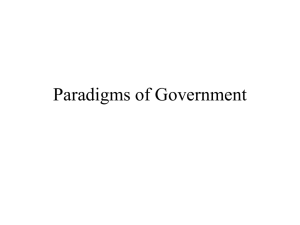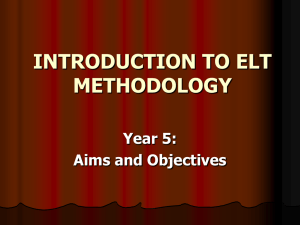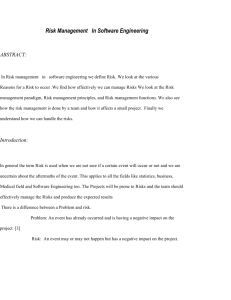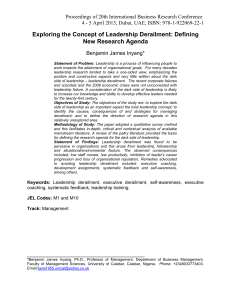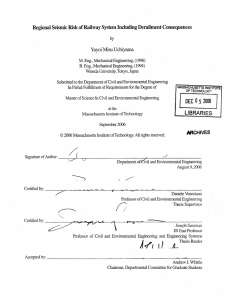Introduction to the Study of Leadership
advertisement
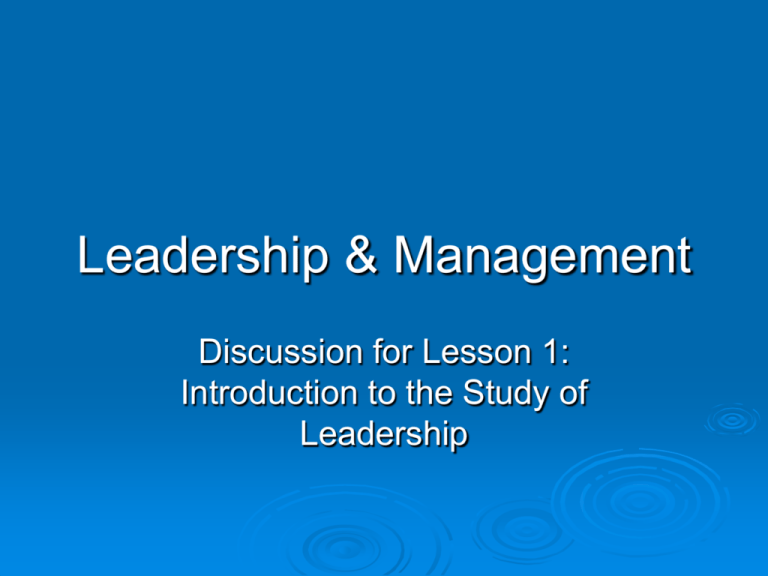
Leadership & Management Discussion for Lesson 1: Introduction to the Study of Leadership Lesson 1 Reading Objectives 1. The student will comprehend the historical and modern definitions of leadership. 2. The student will comprehend the five fundamental transformations in today's organizations and leaders. 3. The student will comprehend the primary reasons for leadership derailment and the new paradigm skills that can help them avoid it. Lesson 1 Reading Objectives 4. The student will comprehend how their leadership potential is developed and the stages of development 5. The student will comprehend and appreciate the value and potential of learning about leadership 6. The student will know the three basic myths of leadership study 7. The student will comprehend the interactional framework for analyzing leadership Lesson 1 Discussion Objectives 1. 2. 3. 4. Discuss the historical and modern definitions of leadership Discuss the five fundamental paradigm transformations in today's organizations and leaders Discuss the primary reasons for leadership derailment and the new paradigm skills that can help to avoid them Discuss the interactional framework for analyzing leadership The Reading Do not simply memorize facts… Ask yourself: What does this mean To Me? Internalize the material Make it relevant Use as the foundation for your Personal Leadership Philosophy Keep the good bits – discard the rest Definitions of Leadership Navy 1944: Leadership is the art of inspiring, guiding and directing bodies of men so that they ardently desire to do what the leader wishes Text 2000: An influence relationship among leaders and followers who intend real change that reflects their shared purposes What is a Leader? Webster: One that leads or guides; one in charge or command of others. One who has the power to influence. Text: One who has the ability to influence followers toward real changes that reflect their shared purpose. Leadership Traits Honest Trustworthy Professionally Competent Sincere Engaged & Aware Consistent Respectful Others? Change Change for the sake of change Don’t throw the baby out with the bath water! Careful…consequences! Influence Not coercive Infers negotiation and compromise Buy-In Two-Way relationship Situational…may not be appropriate! Leadership occurs among people; it is not done to people! New Paradigm Empowerment vs. Control Team – Oriented Shared Power Diversity is the key to success Situational…not always appropriate! Five Paradigm Transformations From: Industrial Age Stability Control Competition Things Uniformity To: Information Age Change Empowerment Collaboration People and Relationships Diversity Reasons for Leader Derailment Insensitive, abrasive, bullying style Cold, aloof and arrogant Betrayal of personal trust Overly ambitious Specific performance problems with the business Over-managing — cannot build a team Stages of Leadership 1. 2. 3. 4. 5. Unconscious Incompetence Conscious Incompetence Conscious Competence Unconscious Competence Leader!!! Catch-22 Why Study Leadership? Knowledge is required to progress from Stage 2 to Stage 3 Discover previously unknown abilities Relate leadership to an organization’s success Become conscious of what is required to succeed Three Leadership Myths “Good Leadership Is All Common Sense” “Leaders Are Born, Not Made” “The Only School That Teaches Leadership Is the School of Hard Knocks” The Interactional Framework Leaders, followers and situation in balance Leaders and followers affect each other Leader can change certain aspects of the situation in order to enhance effectiveness Next Class The Changing Paradigm of Management Decision Making Read: Leadership & Management, Chapter 2 Summary The historical and modern definitions of leadership Five fundamental paradigm transformations in today's organizations and leaders Leadership derailment and the new paradigm skills The “Interactional Framework” for analyzing leadership Questions? ???

